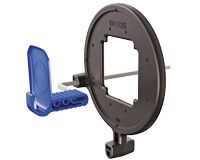A change whose time has clearly come
Change is inevitable, and it frequently comes painfully to the forefront of our existence.
Change is inevitable, and it frequently comes painfully to the forefront of our existence.
A great example is a forest fire that appears to decimate the landscape only, in reality, clears the way for new growth.
Life (and dentists) has a built-in resistance to change. This is probably rooted in our evolutionary learning, where it was frequently safer and less fatal to continue doing things the way they had always been done.
Free on-demand webinar: Understanding medical billing and its relationship with 3D
If walking in the center of the trail kept you from being grabbed by a tiger hidden in the bush next to the trail, then maybe that’s why we walk down the center of the aisle in the grocery store to this day. Or maybe not, but these are the kind of thoughts that bounce around my head like particles in CERN’s Large Hadron Collider.
However, the inevitability of change means that the most successful of the pack are the ones who can identify the most promising changes and use them to ensure survival, success and the betterment of their fellow men.
As dentistry’s technology evangelist, it’s my job and my mission to identify technologies that will benefit our profession and, ultimately, the patients that we all care for.
Now, many of you are probably thinking that if I’m supposed to be looking for and informing on cutting-edge technologies, why are we dealing with digital radiography here? Good question and one I hope to answer as we progress.
More from Dr. Flucke: Dr. Flucke talks about "how digital dentistry works"
Continue to Page 2 to read more ...
This technology is a must
We are now past the point of “why digital radiography” and are now at the point of “when digital radiography.” Even if you are looking at retirement in the not-too-distant future, good luck selling a practice with film. An astute buyer will discount your asking price to allow for the funds needed to convert the office to digital.
We’re not going to discuss the advantages of digital vs. film-that’s like bragging about a new fax machine. Let’s take a look at some things dealing with digital that you might not have considered.
Monitors matter
One of the things that is often forgotten when dealing with digital is the importance of the monitor. You can have the best sensor on the market, but if it is providing an image on a really poor monitor, you’re going to get an image that is not diagnostic.
Video: Dr. John Flucke explains how and why DEXIS CariVu changed his practice for the better
The company providing your digital X-ray system will be happy to recommend monitor specifications for you. It’s important to remember that a quality monitor will cost more, but that cost is well worth it. I love Exorvision monitors because they are designed for interpreting radiographs. Ask your radiography company what models they recommend, and you’ll be amazed at what you can see!
Integration can be important
If you want to have your digital radiography system fully integrate with your practice software, consult with your software company before exploring the radiography options. Some software companies integrate better with certain sensors, and your software provider will be happy to tell you its preferred companies. It’s better to know what those sensors are before you begin shopping than after.
You can use any sensor you want, but that might require having two different programs running in your office: One program for your charting, billing, etc. and one just for radiography. Many offices use this type of system and are happy with it. The only caveat is that you’ll have two databases to back up and two programs to run in the office.
More from Dr. Flucke: CAD/CAM: Having it all ... your way
Continue to Page 3 to read more ...
Reducing mistakes & reducing radiation
It’s a well-known fact that rectangular collimation reduces the exposure to the patient by decreasing the amount of scatter radiation. The problem is that intraoral X-ray heads are round.

To solve that problem, we have a couple of good solutions available to us. The first is for DEXIS users. It is called DEXshield™, and it is a combination rectangular shield and positioning device. The actual rectangular shield is made of tungsten, and the device functions in a similar manner to a standard positioning device.
The other solution is called Tru-Align. This system is designed to attach to any intraoral X-ray head and converts it immediately into a rectangular collimation device. It also provides a positioning device that attaches to it to ensure a perfect radiograph every time. The positioning device actually attaches to the Tru-Align via a set of magnets, and when the sensor is perfectly aligned with the head, a series of LEDs go from red to green to tell the user everything is perfectly lined up.
More from Dr. Flucke: Things I didn't learn in dental school - but I wish I had
These devices decrease scatter radiation up to 60 percent! Also, because they have aligners built into them, the number of retakes with these devices is greatly reduced, which also decreases the patient exposure. Both of these features are great individually, but when combined into a single system, it’s even better.
Evaluation of sensors in your office
It’s one thing to see radiographic images in a booth at a dental meeting. It’s also common to see them on a laptop that the sales person brings to your office. However, it’s another thing altogether to see the images on the monitor you use in your operatory. Making the decision to bring digital into your practice is something that should not be taken lightly, and you need to make sure the company you purchase from is the right one for you and your practice.
When you are getting close to making the final decision, I think it is extremely important to see the images in your environment. That means bringing in the sensors and seeing how they perform in your office. The radiography companies are happy to do this as they want to make sure you get what you are paying for and expecting. Be sure to take advantage of this. Take multiple radiographs of your staff and have your staff take images of you. That will give you an idea of how the system works in your office and in the hands of your staff.
Related reading: Compiling digital data in the dental practice: Seeing is believing
Continue to Page 4 to read more ...
Include the team
I’ve included this as the last point because I feel it is the most important. The members of your team are the ones who will use the radiography system most frequently. I cannot stress enough the importance of having your team support the system you are buying. Any time my team will use a product or technology more than I will, I make a concerted effort to ensure they are on board with both the technology and the vendor providing it.
If your team is not supportive of a new technology, they will not use it to its full capability/capacity. This can be a death knell to the use of the technology in your office. Too many times the doctor makes a decision and then attempts to “force” it onto the team. This creates an environment of conflict that rapidly develops into an us vs. him or her situation. Once this happens, the focus on the patient is lost and the conflict takes the center stage.
Team “buy in” cannot be underemphasized in this scenario. I receive a fair number of emails from offices where these types of conflicts occur, and I can tell you the patient is never the winner. It is extremely important that the doctor remember we are all in this together. By that I mean that every member of the team needs to remember we are all working for the patient.
More from Dr. Flucke: Unveiling the BIOLASE Epic X Diode Laser
By putting the patient first, we put ourselves and our need to be right on the back burner. By putting the needs of the patient first, we show our needs are subjected to the patient’s needs.
At the end of the day, we are always putting ourselves last, which is as it should be.
I tell my patients on a regular basis that we are making sure their dental needs are more important than our dental needs. That is how it should be. By putting the needs of the patient before the needs of the doctor/team, we are doing what is right.
By making sure our focus is always on the patient, we are focusing on what is right.

About the author
John Flucke, DDS, is chief dental editor and technology editor for Dental Products Report and dentistry’s “technology evangelist.” He practices in Lee’s Summit, Mo., and has followed his passions for both dentistry and technology to become a respected speaker and clinical tester of the latest in dental technology with a focus on things that provide better care and better experiences for patients. He blogs about technology and life at blog.denticle.com.